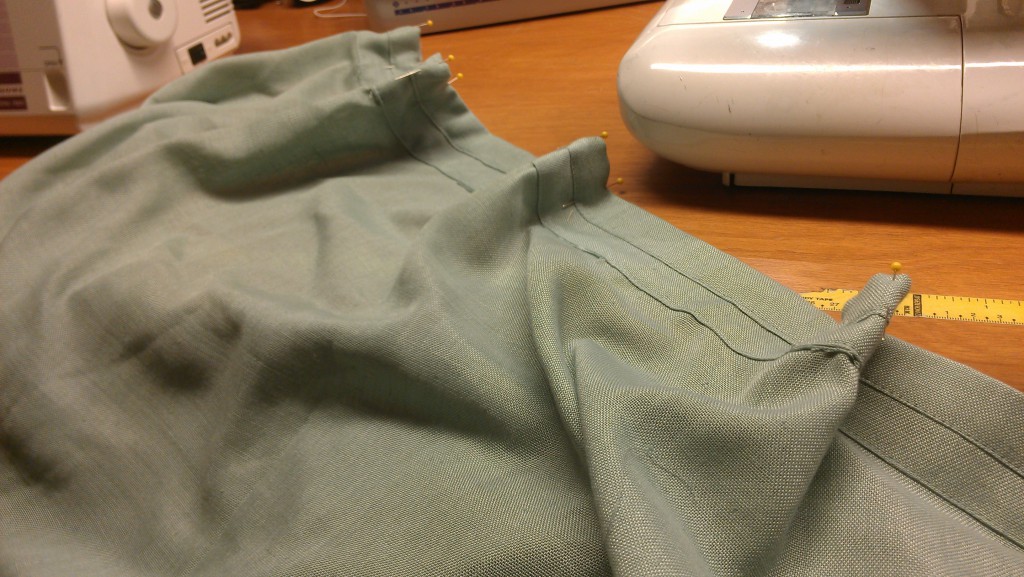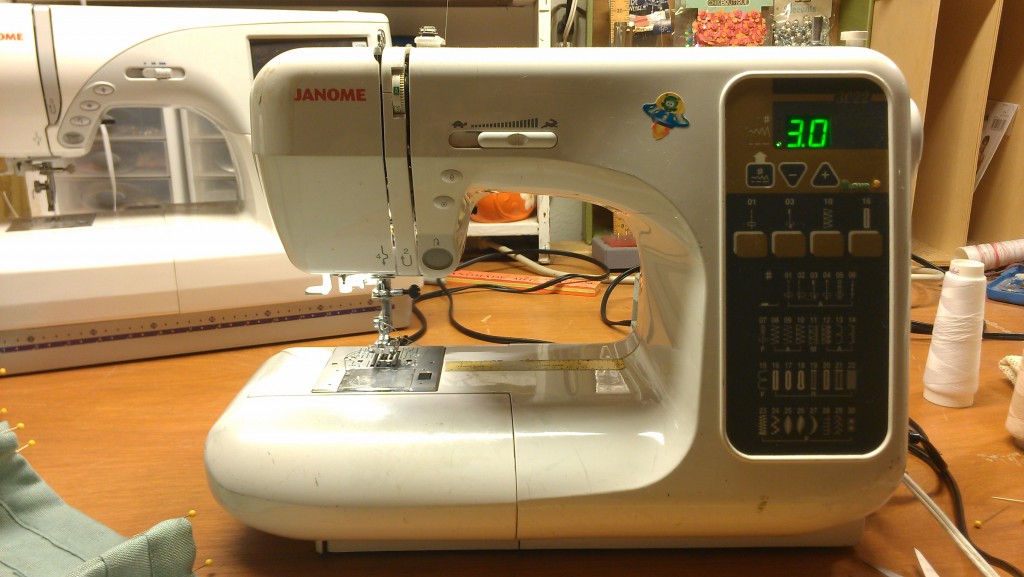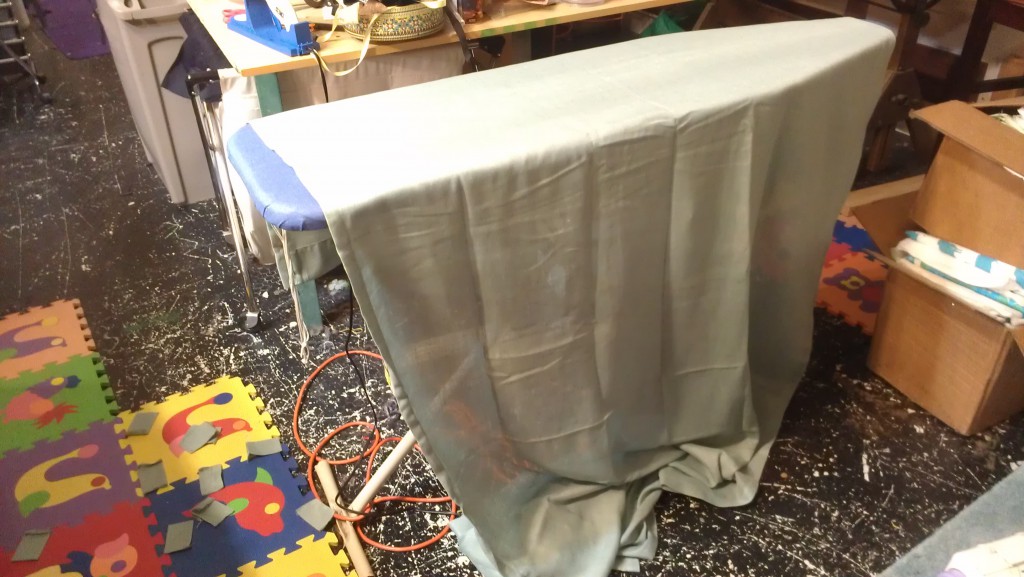A client gave me a pair of pale green linen pants that had an unremovable spot on them and asked me to dye them black. In an attempt to get them as black as possible, rather than greyish, I used 3 packages of dye in as small an amount of water as possible. Since linen can shrink, I couldn’t boil the water or the pants themselves; I used sink-warm water. To keep the pants from floating, leaving some of the fabric outside of the dye and potentially making it splotchy, I weighted it down with heavy things–a large lid and a full kettle:
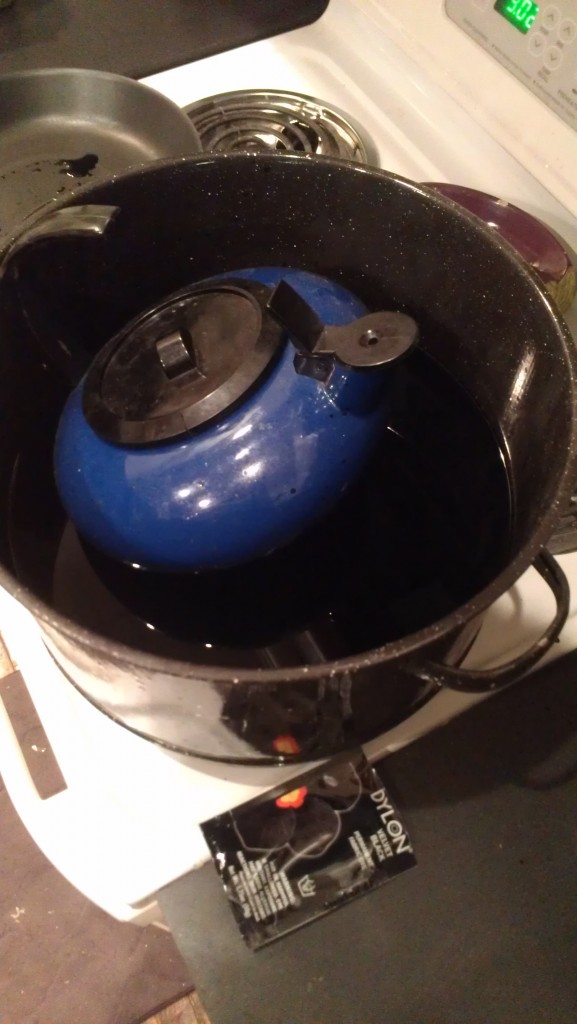
Usually, permanently and seriously setting dye into fabric involves washing in hot water and running it through the dryer. I settled for washing it in cold water, but still pulled it out of the washer about 4 inches smaller.
Here it is with the lining hanging out and a Barbie-sized waistband:
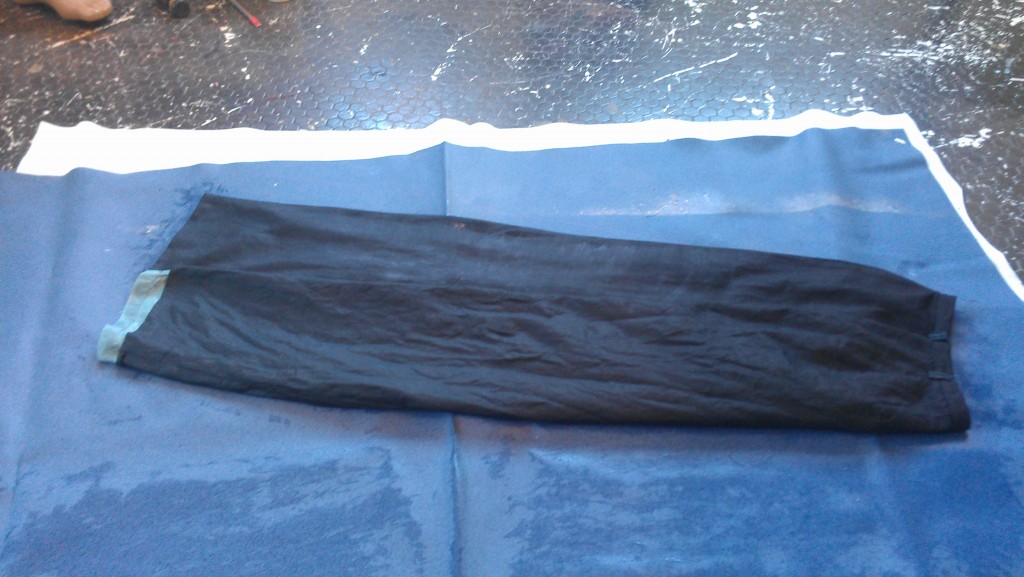
If you had asked me a week ago if clothes could be stretched out larger, I would have recalled the time in highschool when a friend of mine got sent to the office for a “paper stretcher,” essentially an academic snipe hunt, and I would have laughed at you. But while holding a client’s apparently ruined garment, I went ahead on a google search for fabric stretching.
Turns out it IS possible. Most sites recommend soaking it in conditioner beforehand, which I did, though I’m not sure that’s entirely necessary. I used the piano harp to weight it on one end and some paint cans with handweights on top on the legs. I put the paint cans in plastic bags to protect the pants from whatever might be on the cans.
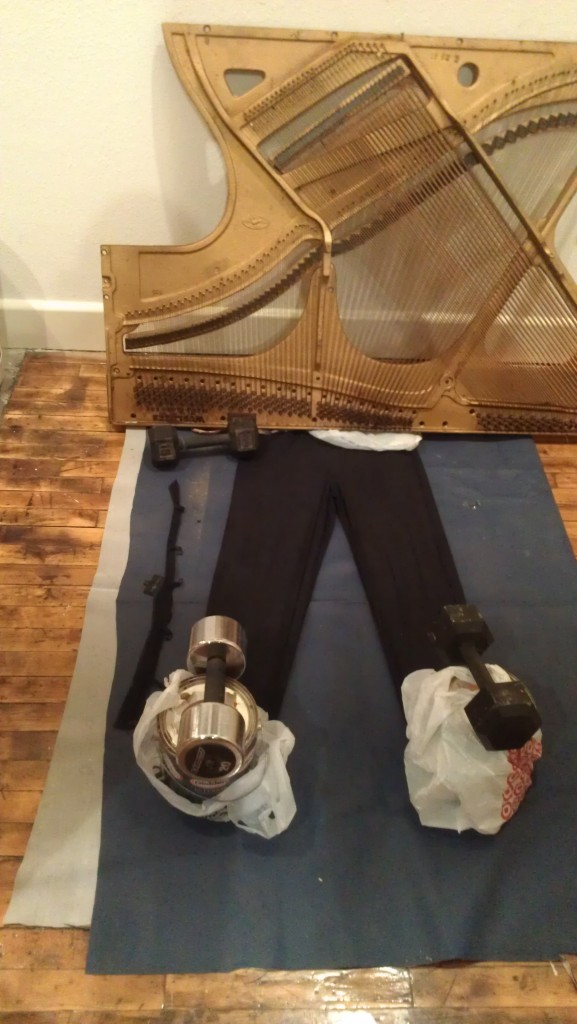
The pants mostly shrank up, but not so much side-to-side. The reason the waist looked like it shrank so much is because the grain of the waistband was horizontally the same as the vertical grain of the pants themselves. I had to pull off the waistband to effectively stretch the pants, and when I tried to stretch the band, the ease clipped into it ripped. So I gave the band up for lost and just stretched the belt loops.
It pulled back to the original length, but it became increasingly obvious that the dye had not set.
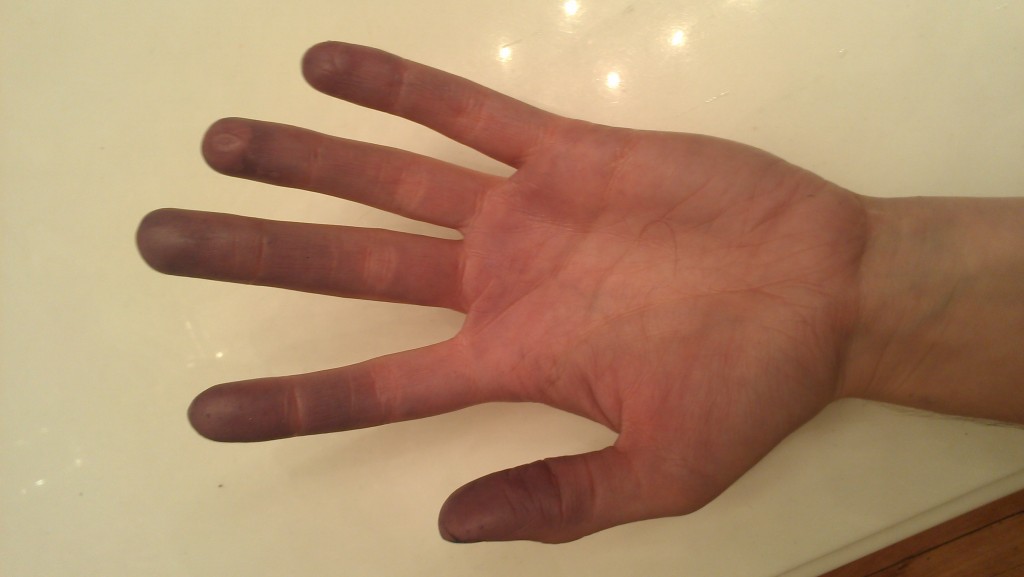
I didn’t wear gloves while messing around with the stretching and the dye kept coming off all over my hands. So I washed the pants in a gentle cycle of cold water with vinegar. I stitched the belt loops into a baggie made of scrap fabric so they could also be washed in the vinegar without getting lost.
The pants came out 2 inches shorter again, and the dye was still coming off to the touch. I washed them again, including more soaking time, in a larger quantity of vinegar, and they shrank back down by a total of 4 inches.
I stretched them again and made a new waistband. The client tried them on and was pleased with the color and happy with the length. They’re still a little bit too narrow in the hips, so I do need to attempt to stretch them out more horizontally, though it’s only by about an inch at the most.

